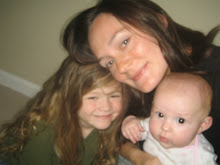
1.Contains a title using the format listed above .25 points
2.Contains the sources you used with links to these sources .25 points
http://www.nhm.org/
http://museum-of-natural-history.visit-los-angeles.com/
3.Contains a brief paragraph how it connects to your study of humanities. 1 point
The Museum of Natural History connects to my study of humanities because it teaches about our world and our culture. The museum is full of fossils that date back billions of years. Each of them are a piece that represents humans today and all of the organisms around them.
4.Contains the following "analytical elements":
a.Observation: What did you choose? What do you see or hear or feel or think of in the choice you made? What is the subject of the work? If you chose a 'thing' what is the work made of and what techniques (colors, lines, shapes, textures)does the creator use? Be specific in your description. If you chose a place, be specific in your description of what you see or hear. Talk to your reader as though they cannot see the item but somehow must draw a painting of what you see or hear. 1 point
I chose the Museum of Natural History Museum of Los Angeles County. The museum of natural history is one of the most extensive and valuable collections of natural and cultural history. It houses more than 35 million specimens and artifacts covering 4.5 billion years of history. This is the largest natural and historical museum in the Western United States. There is also and active research center. The building and rotunda date back to 1913. The rotunda's dome is stained glass.In the Visual Vault you can view artifacts from the Inca, Maya, and Aztec cultures. The dinosaur exhibit has an interactive dinosaur where the kids and the adults can pet a "real dinosaur". One could spend the whole day visiting the Gem and Mineral Hall, walk through the bird and animal habitats where there are 27 learning stations, and visit the California Waters where you can see the marine life specific to California. Another "must see" permanent exhibit the Ralph M. Parsons Discovery Center where there are "handle-able" specimens.
b.Interpretation: What is your choice about? Give specific examples to support this statement in 2 sentences; do so in a way that teaches us something about your choice. Make Paulo Freire proud! .75 point
My choice is about learning about our culture. By visiting the museum you can learn about how modern humans came to be and some of the species that we share the earth with. I think that learning about the history of humans and their different cultures help us to understand more about eachother as humans.
c.Judgment: What led you to your choice? What do you think or feel about this choice? Why do you feel this way? Support your thoughts with specific observations. .5 point
I love anthropology. I have been to natural history museums before and always learn something new. I have never been to the museum in LA County, but my next trip down there it will happen. Visiting museums is a fun and interesting way to broaden our knowledge.
d.Questioning: What else would you like to know about this choice? When completing the question section, lead your audience into the question by stating a fact you do know, yet you still have the related question. This way, both your audience and you will have an educational experience. Example: I learned that John Steinbeck's Grapes of Wrath was based on his personal experience working with farm workers. I would like to know if the characters he used in that book are fictitious or are they people he met? .5 point
There are permanent exhibits in the museum, and there are some temporary. I would like to know how often the temporary exhibits come to the museum, are they on a rotation of some sort? How often does the museum get to exhibit them?
5. Using your classmates work from last week, tell us one thing you learned from 1 student. Is this one thing some common experience you share or some experience that is completely different than what you experienced? Is this one thing related to our class theoretical foundation and if so, how? Is that one thing related to historical or cultural context of this country or a different one? Link that persons blog to this entry (eg cut paste that blog entry here) . .5 point
I learned from Cathy that when the Russian River floods it leaves behind a high deposit of minerals making the land rich in nutrients. The Dry Creek Valley vineyards in turn produce high quality grapes. I agree with Cathy that certainly, the vineyards of Sonoma County have kept Sonoma County's economy strong.
http://cathyishappy.blogspot.com/

No comments:
Post a Comment